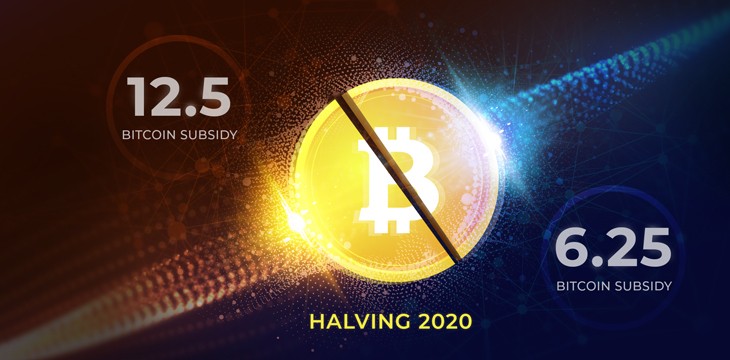3 Key Takeaways
- Bitcoin halving halves mining rewards, reducing new BTC supply and reinforcing long-term scarcity.
- The 2025 halving introduces a new era of institutional involvement and sustainable mining innovation.
- Halving remains Bitcoin’s foundation of trust, symbolizing transparency and monetary discipline in a digital age.
What Is Bitcoin Halving? Understanding the 2025 Event and Its Market Impact
Every four years, a single event reshapes the cryptocurrency landscape: Bitcoin halving. It’s a technical yet deeply symbolic process that directly affects Bitcoin’s supply, price dynamics, and mining incentives.
As we move through 2025, Bitcoin’s latest halving — which occurred in April — has already sparked debates among traders, miners, and economists about its implications for the broader digital economy. For newcomers and investors alike, understanding what Bitcoin halving is and why it matters is crucial to navigating what comes next.
The Basics: What Exactly Is Bitcoin Halving?
Bitcoin halving is a programmed event that cuts the rewards miners receive for adding new blocks to the blockchain by 50%. It occurs roughly every 210,000 blocks — or about every four years — as part of Bitcoin’s built-in monetary policy designed by its pseudonymous creator, Satoshi Nakamoto.
When Bitcoin launched in 2009, miners earned 50 BTC per block. That reward has since halved multiple times:
- 2012: 50 → 25 BTC
- 2016: 25 → 12.5 BTC
- 2020: 12.5 → 6.25 BTC
- 2024/2025: 6.25 → 3.125 BTC
This reduction mechanism ensures that the total supply of Bitcoin will never exceed 21 million coins. By slowing the issuance rate over time, Bitcoin mimics the scarcity of commodities like gold — a key reason it’s often described as digital gold.
In short: halving is Bitcoin’s way of enforcing scarcity, preserving value, and controlling inflation — without any central authority or intervention.
Why Halving Matters: The Economics Behind Scarcity
At its core, halving is about supply and demand. When the rate of new Bitcoin entering circulation drops, the available supply tightens — while demand, historically, has continued to grow.
This dynamic has often led to price surges in the months following past halvings. For example:
- After the 2016 halving, Bitcoin’s price rose from around $650 to nearly $20,000 by late 2017.
- Following the 2020 halving, Bitcoin climbed from roughly $9,000 to over $60,000 in 2021.
While past performance isn’t a guarantee, investors view each halving as a market reset — a moment that realigns mining economics and reintroduces scarcity into the ecosystem.
However, 2025’s halving takes place in a far more mature market. Institutional investors, exchange-traded funds (ETFs), and regulatory oversight have all added layers of complexity. The result? Price reactions are likely to be more measured — but potentially longer-lasting.
How Bitcoin Halving Impacts Miners
Bitcoin’s security and operation depend on miners — individuals and organizations using powerful computers to validate transactions and secure the network. In return, miners receive block rewards and transaction fees.
After the April 2025 halving, miners now earn 3.125 BTC per block, down from 6.25 BTC. That effectively slashes mining revenue overnight, forcing many to reassess operations.
For efficient miners with access to renewable energy or low-cost setups, halving can actually be an advantage — it squeezes out less efficient competitors and reduces network congestion. But for others, especially smaller operators, the drop in profitability can be devastating.
This constant rebalancing keeps Bitcoin’s network efficient, competitive, and — most importantly — decentralized.
In 2025, miners are increasingly relying on layer-2 solutions (like the Lightning Network) and AI-driven energy optimization to stay profitable. Some are even partnering with energy firms to recycle heat generated from mining into renewable grids — a growing trend that could define the next halving era in 2029.
Market Reactions: How Investors See Halving in 2025
Every halving triggers a wave of speculation and strategic repositioning. Traders anticipate supply shocks, while long-term holders (“HODLers”) often view it as an opportunity to accumulate.
But the 2025 environment is unique. Unlike the previous halving, Bitcoin is now embedded in mainstream finance. ETFs approved in late 2024 have brought institutional exposure, while governments are exploring Bitcoin-backed financial instruments.
This broader adoption means Bitcoin’s post-halving trajectory is no longer driven solely by retail speculation. Instead, it’s shaped by a mix of macroeconomic factors — including global interest rates, AI-driven financial analytics, and energy market fluctuations.
That said, early market indicators suggest a renewed bullish sentiment. Analysts point to reduced daily issuance (from 900 to 450 BTC) as a key driver of potential upward momentum through late 2025 and 2026.
Beyond 2025: Halving and Bitcoin’s Long-Term Vision
By 2026, Bitcoin’s halving effect will likely extend beyond short-term price movements. The event represents a philosophical milestone in decentralized economics — proving that monetary scarcity can exist without human intervention or political decision-making.
As the next halving approaches in 2028–2029, we can expect several trends to continue gaining traction:
- Increased Layer-2 adoption: Faster, cheaper Bitcoin transactions through the Lightning Network and similar solutions.
- Institutional diversification: ETFs and digital banks offering hybrid Bitcoin products.
- Energy-efficient mining: Shift toward carbon-neutral operations, merging blockchain with sustainable technology.
Bitcoin’s controlled, predictable supply contrasts sharply with fiat systems subject to inflation and central bank policy. This difference — especially as global economies grapple with digital currency transitions — underscores why halving continues to matter well beyond the mining community.
Also read :How to Set Up a Non-Custodial Crypto Wallet
The Bigger Picture: Why Halving Symbolizes Trust
In an age where central banks can print money at will, Bitcoin’s halving mechanism stands out as a radical experiment in monetary discipline. It proves that a decentralized network can self-regulate — transparently, predictably, and without manipulation.
For many, that predictability is what gives Bitcoin its long-term credibility. Every halving is not just a technical update, but a reaffirmation of the system’s core promise: a finite, censorship-resistant form of digital value.
As we move toward 2026, Bitcoin remains the anchor of the cryptocurrency ecosystem — a reminder that trust in technology, when properly designed, can be as powerful as trust in institutions.
Conclusion: The Halving That Redefines Value
So, what is Bitcoin halving? It’s both a technical milestone and an ideological statement — a moment that reinforces scarcity in a world of abundance.
The 2025 halving marks a new phase in Bitcoin’s maturity, one shaped not just by miners and early adopters, but by global institutions, regulators, and billions of users navigating a digitized financial future.
As supply tightens and demand evolves, halving serves as a reminder of Bitcoin’s original genius: value defined not by decree, but by mathematics.
For investors and innovators alike, understanding Bitcoin halving isn’t just about anticipating price — it’s about recognizing the blueprint for the next generation of money.




